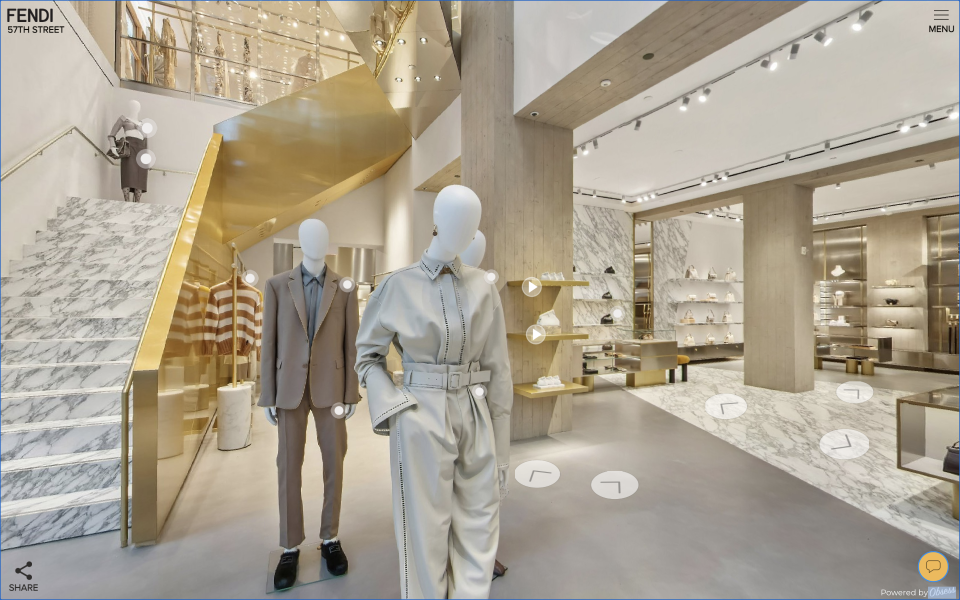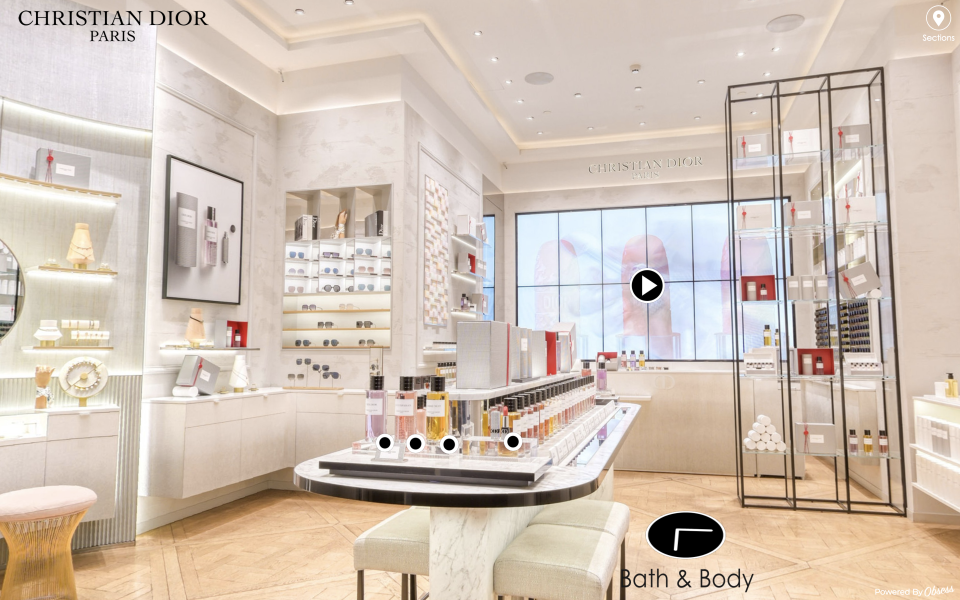Metaverse Study: 70 Percent of Virtual Store Visitors Purchased Items

Fashion slept on the e-commerce promise of the early web, but it doesn’t want to make the same mistake with the metaverse. Brands are racing to partner up, develop strategies, spearhead divisions and more to pursue the upcoming 3D version of the internet. A new survey, released Tuesday, appears to validate their leap of faith.
Virtual e-commerce platform Obsess enlisted research firm Kantar to gauge sentiment around e-commerce in the virtual worlds. The results of its poll, which queried 1,001 U.S. consumers, found that these types of shopping experiences inspire a significant amount of enthusiasm and a potentially high rate of repeat customers.
More from WWD
According to the report, “The Metaverse Mindset: Consumer Shopping Insights,” 70 percent who visited virtual stores made a purchase there. Millennials topped the list, at 77 percent, leading 69 percent of Gen Z and 67 percent of Gen X shoppers.
Gaming loomed large in the findings. Nearly three-quarters, or 74 percent, of Gen Z participants purchased digital items in games, such as accessories, skins or garments for their avatar. Sixty-two percent overall purchased something in-game, and more than half, at 52 percent, said they would pay up to $49.99 to buy something for their avatar.
“The numbers were definitely higher than we have thought in some cases because, overall, this technology is still new,” Neha Singh, chief executive officer of Obsess, told WWD. “It was interesting that 60 percent of Gen Z consumers said that they think brands should sell their products on metaverse platforms — and that’s not specifically for digital products or physical products.
“It’s more about the fact that they are spending so much time on Roblox and Fortnite, and the expectation of this demographic is that the brands meet them where they are.”
Nearly 75 percent of Gen Z consumers reported buying a digital product in a video game, and 60 percent of these young consumers believe selling on metaverse platforms is a must for brands.
Of that group, 54 percent said they want to be able to shop anywhere they go online; 45 percent think virtual stores should work like online shopping malls, and 41 percent want brands to set up metaverse stores because it would be convenient for buying both physical products and digital goods like NFTs.
One-third of all respondents, including 40 percent of Gen Zers and 40 percent of Millennials, want to shop for real or virtual products in the metaverse.

Courtesy image
But traction doesn’t always hinge on younger shoppers. Fifty-four percent of Gen Zers who shopped in a virtual store before said they were likely to do it again, while 67 percent of Gen Xers said the same.
Marketers may want to note that for some consumers, the enthusiasm goes beyond shopping and transactions. When researchers asked participants about exploring virtual experiences from their favorite brands in video games, 51 percent of Gen Zers and 44 percent of Millennials said they would be very interested. Forty-one percent of Gen Z and 38 percent of Millennial respondents showed interested in exploring any metaverse environments from the brands.
Singh pointed out that, while virtual experiences and 3D stores existed before, the right conditions for them have only come together recently.
“In terms of actually being practical, on a mobile device, with the hardware that we have today, and network speeds that we have today, it’s only been possible in the last two or three years,” she said.
“[It’s] actually being delivered to consumers in a way that is easy for them to access. They don’t have to put on a virtual reality headset, and they won’t have to download an app,” she continued. “The hardware network speed has only been strong enough in the last like two to three years for them to be able to deliver this. And then, of course, brands are actually using it.”
The other inflection point, she noted, was the maturity of gaming platforms.
In 2019, the Entertainment Software Association revealed that 65 percent of American adults spent time playing some type of video game, representing some 164 million people. The number jumped during the pandemic by roughly 30 percent in 2020, and in 2021, the U.S. hit 227 million gamers. Most stated they plan to continue, even after the pandemic is over.
“The pandemic accelerated that, with Roblox now having 45 million daily active users and Fortnite having 350 million monthly active users,” Singh explained. “So now this is a very significant group of people for these brands to reach.”
Gaming is but one gateway to the metaverse. Other companies launch their own virtual e-commerce stores, relying on tech partners like Obsess to build them. These immersive environments may seem like cutting-edge fare, but such spaces can feel more familiar to shoppers. “It’s getting closer and closer to how our brains operate, so it’s very easy for people to understand,” she said.

Courtesy image
Obsess notes that interest in its platform jumped last year, particularly after Facebook changed its name to Meta. The company, which has created virtual online stores for Christian Dior, Ralph Lauren, Fendi, Charlotte Tilbury, Dermalogica and others, saw traffic boom, while average monthly inbound inquiries from brands seeking virtual stores and metaverse solutions jumped threefold.
Although skeptics remain dubious about the metaverse, and it will take years — even up to a decade — for it to arrive, the fashion sector seems sold. It doesn’t want to miss out on the opportunity in this future, likely because it’s haunted by the past.
Brands saw the web debut as a publicly available service in the early 1990s, and watched as start-ups like Amazon started selling books on the internet soon after. By the time Gucci opened its e-commerce site in 2002, a landmark launch for luxury online shopping, Amazon had finally gotten the hang of internet retail and reported its first quarterly profit of $5 million.
Now the e-commerce giant, which plans to launch its first brick-and-mortar apparel store later this year, forecasts net sales in the fourth quarter of 2021 in the range of $130 billion to $140 billion.
Lesson learned, and fashion is not hesitating this time with the metaverse. According to the Obsess/Kantar report, many consumers can’t wait either — including some who don’t exactly know what the metaverse is.
At 53 percent, just a little more than half of survey participants said they are very or somewhat familiar with the term. Roughly 40 percent said it’s still in the conceptual stage, but know it will someday involve connected online platforms and avatars, and 27 percent think that “metaverse” refers specifically to tech owned by Facebook’s Meta.
Whatever they believe it is, 38 percent overall want to shop there. Desire looked strongest among the Gen X crowd, at 56 percent, but captured fewer Millennials, at 44 percent, and Gen Z shoppers, at 42 percent.
For a tech movement that hasn’t yet begun in earnest, the numbers already look promising, though Obsess believes that retailers and brands will need to hone their metaverse messaging and make the appeal clear. Good thing they will have plenty of time to work on it. Many, including its clients and more, including brands such as Gucci, Nike, OTB Group, Rebecca Minkoff and numerous others, have already started.
Sign up for WWD's Newsletter. For the latest news, follow us on Twitter, Facebook, and Instagram.


